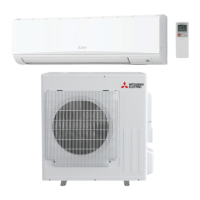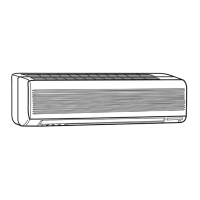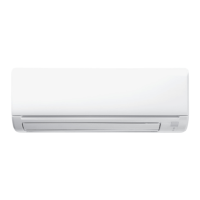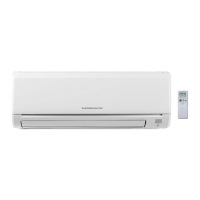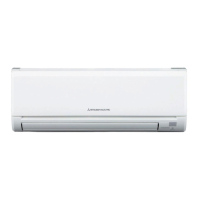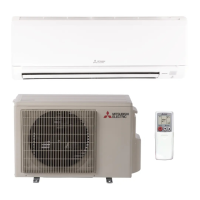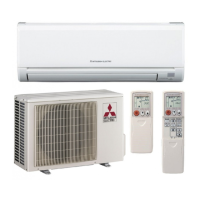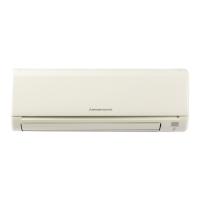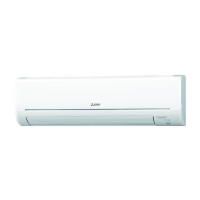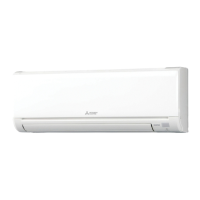
Do you have a question about the Mitsubishi Electric MSZ-G12SV and is the answer not in the manual?
| Type | Split System |
|---|---|
| Cooling Capacity | 3.5 kW |
| Cooling Capacity (BTU) | 12000 BTU |
| Heating Capacity | 4.0 kW |
| Power Supply | 220-240 V, 50 Hz |
| Weight (Indoor Unit) | 9 kg |
| Refrigerant | R410A |
Explains symbols and their meanings used in the safety precautions section.
Shows the location of warning marks and safety devices on the unit.
Covers further safety advice for operation, installation, and battery handling.
Identifies and labels the parts of the indoor air conditioner unit.
Identifies and labels the parts of the outdoor air conditioner unit.
Identifies and labels the buttons and sections of the remote controller.
Explains the auto restart feature and how to enable it.
Guides on handling, battery replacement, and time setting for the remote.
Details how to operate the unit when the remote controller is unavailable.
Explains how to start, stop, and use the "I FEEL..." auto operation mode.
Describes the automatic operation logic and display indicators for the "I FEEL..." mode.
Guides on selecting COOL, DRY, or HEAT modes and adjusting settings.
Offers advice for effective cooling and comfortable heating based on conditions.
Instructions for changing fan speed and vertical/horizontal vane direction.
Explains how to use the swing function for wider air distribution.
Describes how the unit automatically sets air flow direction based on mode.
Details how to activate and release the energy-saving Econo Cool mode.
Instructions on how to initiate and stop the swing operation.
Guides on programming the timer for automatic start or stop.
Explains how to use ON and OFF timers together.
Steps for preparing the unit for storage and reuse.
Crucial safety step to disconnect power before any maintenance.
Step-by-step guide for removing and cleaning the air filter.
Step-by-step guide for removing and cleaning the deodorizing filter.
Instructions for replacing deodorizing and air cleaning filters.
Common checks to perform before contacting service for issues.
Actions to take after a power outage to restart the unit.
Explains normal operational sounds that might be mistaken for malfunctions.
Addresses common problems like no operation, strange smells, or insufficient cooling.
Covers installation site selection, electrical work, and relocation procedures.
Notes on inspection, maintenance, and proper disposal of the unit.
Lists key technical data, capacities, and operating ranges for the models.
